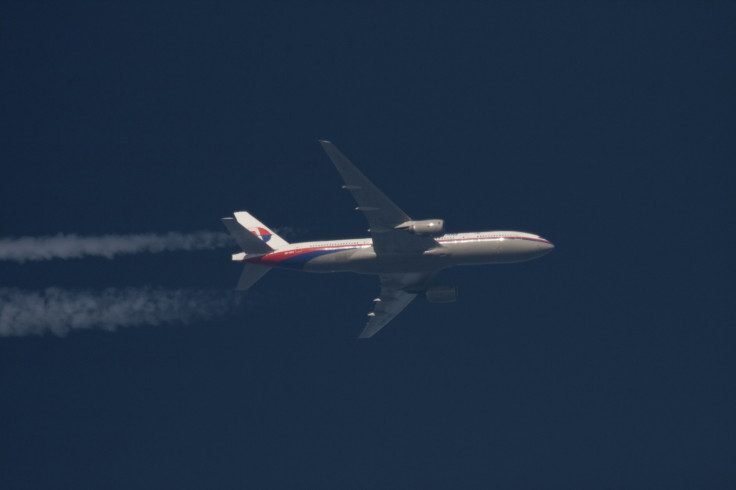MH370 Fallout: Federal Regulators Urge Streaming Black Boxes And Other Tracking Devices For US Airliners

The National Transportation Safety Board (NTSB) on Thursday recommended that U.S. airliners install a range of new technology onboard aircrafts. The new features endorsed by the board would make it easier for investigators to piece together the cause of an accident in cases where a plane is difficult to recover or goes missing, NTSB said in a statement. The recommendation follows the crash of AirAsia 8501 in December, the disappearance of Malaysia Airlines 370 last year and several other high-profile incidents.
“Recent accidents have pointed to the need for improved technologies to locate aircraft wreckage and flight recorders lost in remote locations or over water,” the NTSB said in a statement.
As part of a series of proposals submitted to the Federal Aviation Administration, the NTSB recommended that airlines equip their planes with advanced satellite tracking systems and tamper-resistant transmitters that can float and would broadcast an aircraft’s position to anyone within six nautical miles in the event of a crash or emergency landing. The board also wants airlines to install video recorders in the cockpit that would capture the last two hours of activity before a flight terminates. The idea of a camera in the cockpit has in the past met resistance from pilots' unions.
In perhaps the most ambitious proposal, the NTSB said airlines should install equipment capable of streaming black box data to ground stations while an aircraft is still in flight. This could give investigators access to critical data in the event a plane goes down or goes missing, and the black box is unrecoverable. Such a system could have helped safety crews determine what happened to Air Malaysia 370. The Boeing 777 vanished after departing Kuala Lumpur for Beijing on March 8. It has yet to be found.
A streaming black box also could have assisted investigators who probed the crash of Air France 447, which plunged into the Atlantic Ocean after departing from Rio de Janeiro on the night of May 31, 2009. It took almost two years for crews to locate and recover the aircraft and the black box under 13,000 feet of water.
“Technology has reached the point where we shouldn’t have to search hundreds of miles of ocean floor in a frantic race to find these valuable boxes,” said NTSB Acting Chairman Christopher Hart in a statement. “In this day and age, lost aircraft should be a thing of the past.”
Some airlines are already beginning to experiment with the technology. First Air, of Ottawa, Canada, uses a streaming black box and satellite positioning system on its fleet of Boeing 767 and 737 aircraft. Pilots or ground crews can trigger the system, made by Calgary-based FLYHT Aerospace, to transmit several minutes of live aircraft performance data to ground stations in the event of an emergency or other unusual circumstance.
First Air officials told International Business Times that the system adds an extra layer of security to a fleet that has to cover vast, unpopulated regions of northern Canada that are out of conventional radar range. “We fly up into the high Arctic,” said Vic Charlebois, VP for flight operations at the airline. “There is no radar tracking up there, just as there is no radar tracking over the ocean.”
Airlines typically operate on tight margins, so cost considerations may limit the use of such systems, barring an FAA mandate to install them. FLYHT’s Automated Flight Information Reporting System (AFIRS) product costs about $100,000 per aircraft. But Charlebois said it has already paid for itself. Beyond the black box function, the system allows ground crews and dispatchers to communicate with pilots via satellite from anywhere in the world. First Air crews have used it to avoid costly delays and diversions by directing pilots away from remote air bases that have been shut in by weather.
“We don’t operate in environments with big airports and sophisticated weather reporting and people to keep the runway clear,” said Charlebois.
Virtually all major U.S. carriers voluntarily use some form of satellite equipment, such as the Aircraft Communications Addressing and Reporting System, to continually broadcast their planes’ positions and enable pilot-to-ground communication. But none has yet deployed streaming black box technology like that sold by FLYHT or Toronto-based Star Navigation Systems, another market entrant.
The International Air Transport Association, an airline trade association, said it is studying the technology in concert with its airline members. A spokesman for the organization told IBTimes that a number of issues must be addressed before it could be ready for widespread adoption, “including, for example, storage and ownership of the data” generated by a streaming black box.
The NTSB’s recommendations do not have to be accepted by the FAA, but the administration has in the past adopted many of the safety board’s proposals.
© Copyright IBTimes 2024. All rights reserved.





















